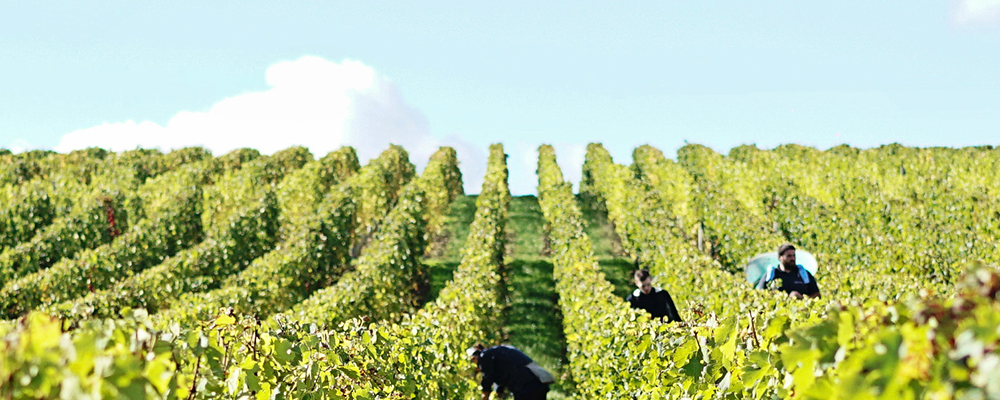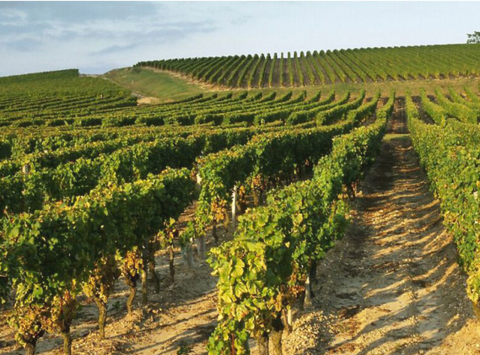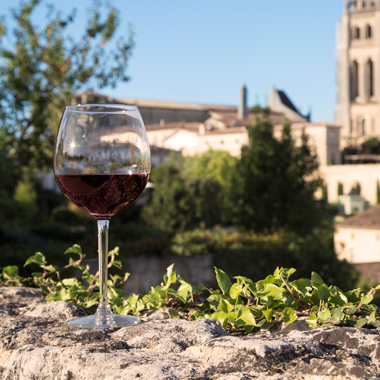Bordeaux wine harvest – a quick guide
In the beginning of October, the vineyards of the Bordeaux region can finally rest. Like every year, they have just delivered their most beautiful fruits. Let’s go back for a moment to the cyclical highlight in a winegrower’s life: the wine harvest.
1. Choosing the right moment – that’s where it all begins.
From August onwards, winegrower keep a close eye on their fruit, plot by plot. They pick some grapes to check their ripeness, depending on the variable weather conditions. If the fruit is picked too early, the juice will be sour. If it happens too late, the sugar will dominate the aromas. So everything is a matter of balance. Winegrowers’ taste buds take care of this, according to the specificities of their terroir and grape varieties.
Once the date has been set, the wine harvest can begin.
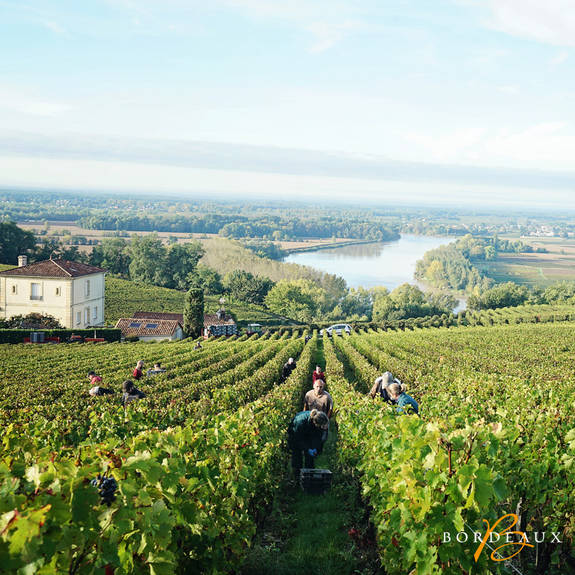
In the Bordeaux region, the wine harvest often starts at the end of August with the dry white wines and rosés, followed by the red wines, and ends with the sweet wines. The harvest takes one to three weeks, depending on the size of the vineyard, the weather and the technique used. Throughout the Bordeaux wine region, the wine harvest lasts one to two months in total.
2. Choosing the right tools
The wine harvester is the most important tool of the winegrowers of the Bordeaux region. By shaking the vines, the ripe fruit is collected quickly and efficiently. This way it is harvested at the perfect time for the vinification process. The vineyards of Bordeaux are on average 26 years old and need to be pampered.
However, for the more vulnerable grape varieties, older vines (some are over 60 years old), small family-owned wineries, or areas inaccessible to machines, manual labour remains the best solution for winegrowers.
In 30% of the Bordeaux vineyards, the harvest is also the time of pleasant reunions. It is then done manually with each picker selecting the ripe grapes bunch by bunch. This tiring work that requires a lot of effort (a good picker collects up to 1000 kg per day) is often interrupted during the afternoon with a nice meal.
Indispensable tools for manual harvesting:
• An alarm clock to get up at sunrise
• Pruning shears: the tool for all wine pickers
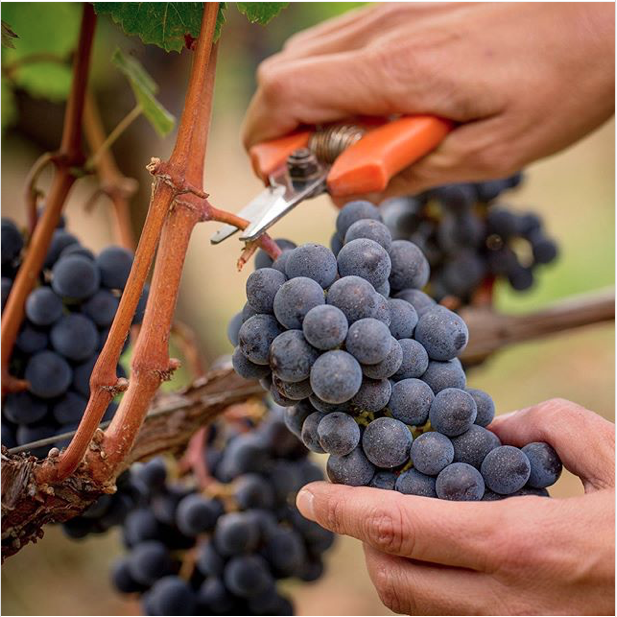
• Buckets or wicker baskets to collect the grapes
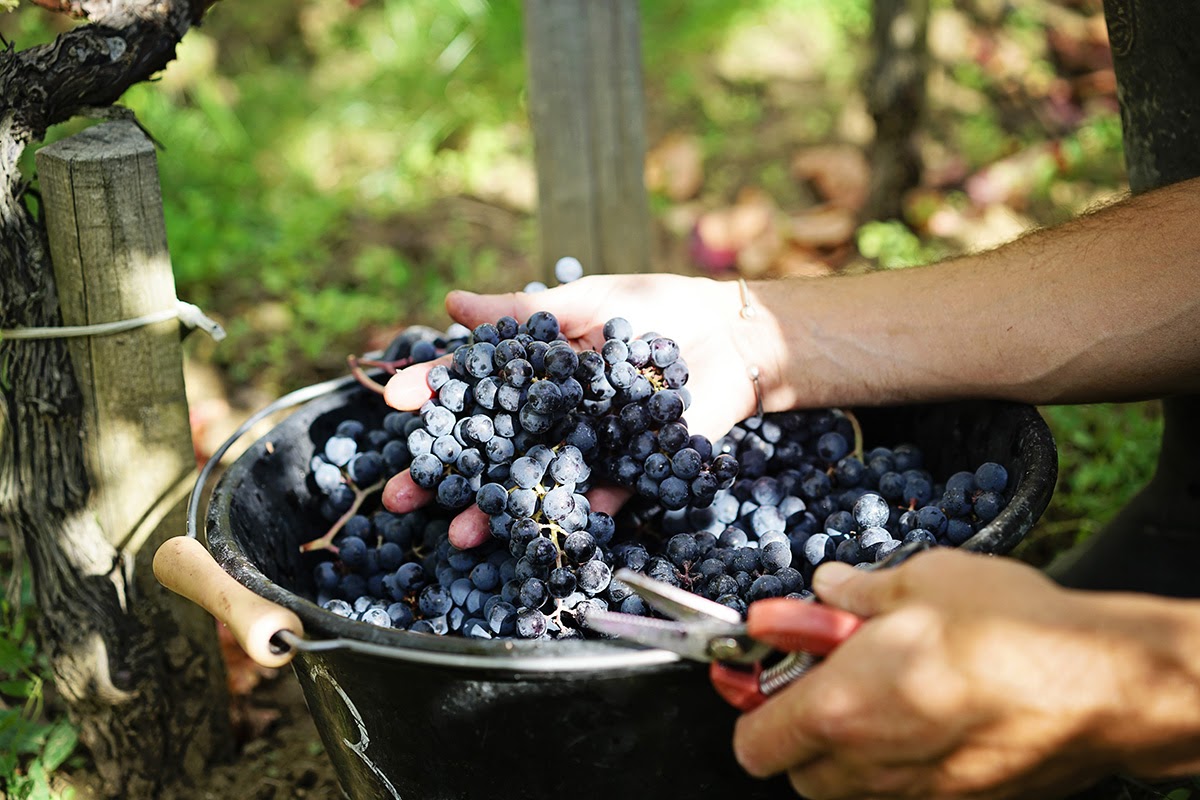
• Back baskets to carry the grapes to the loading platform or small harvest boxes that are then stacked on a loading platform.
3. Transport the grapes quickly
Quick quick! Once picked – manually or by machine – the grapes must be quickly transported to the vinification cellar. Otherwise there is a risk that the grapes will start to soak and ferment, losing all the necessary properties for a good vinification process.
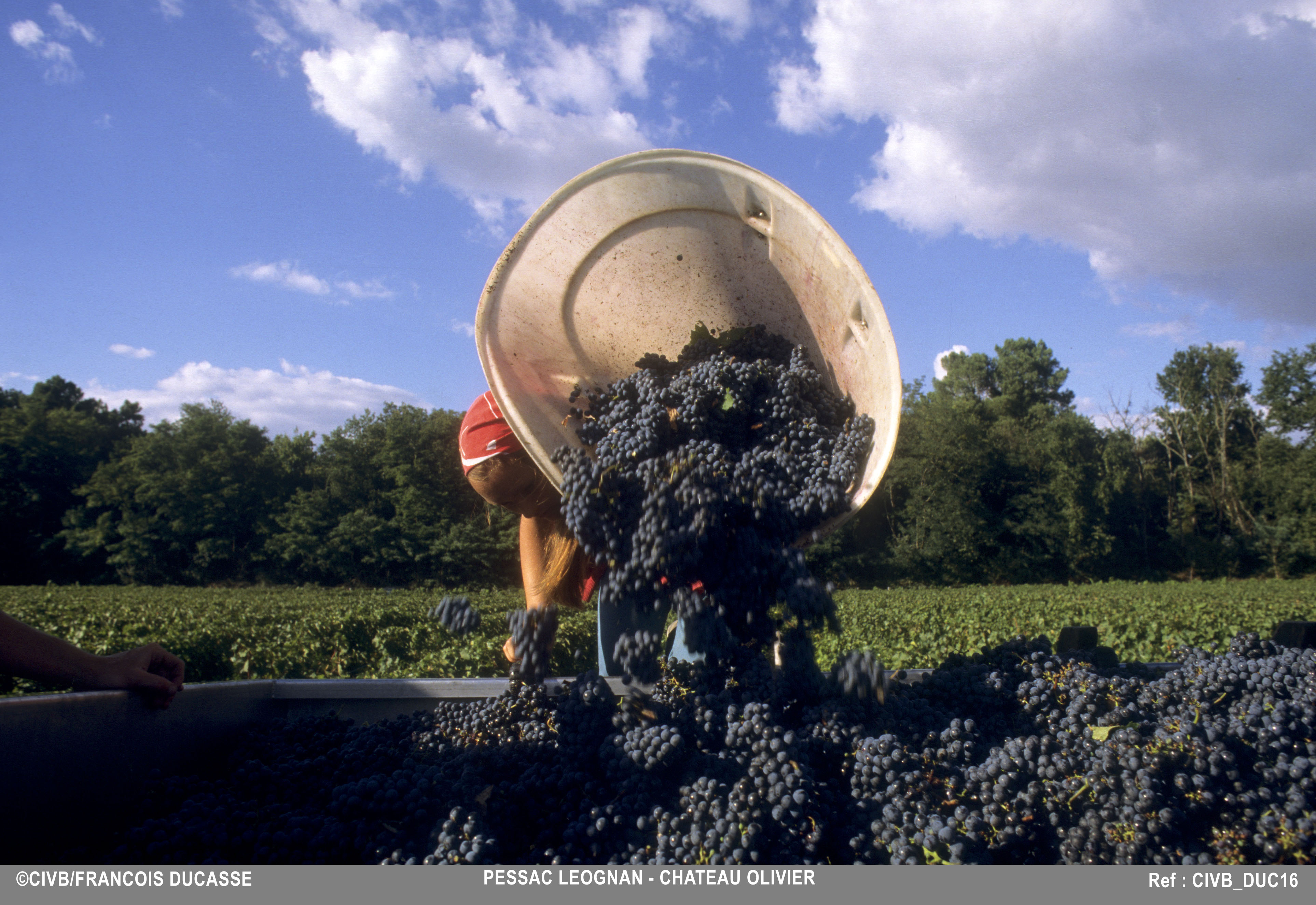
4. Separate the stems from the grapes
It is now time for the partial or complete desiccation of the harvest. For this purpose, a machine is used that gently removes the stems from the bunches so that only the grapes are retained.
Despite the dissatisfaction of the supporters of ripening, some wine growers prefer to store the grapes when they are well ripe to add some complexity, tannins and freshness to their wine.
5. Keep only the best grapes
Manual labour is used at the sorting tables positioned usually at the entrance to the wine cellar. They separate the good grapes from the bad and remove leaves, twigs and small insects using a treadmill on which all the grapes slide by.
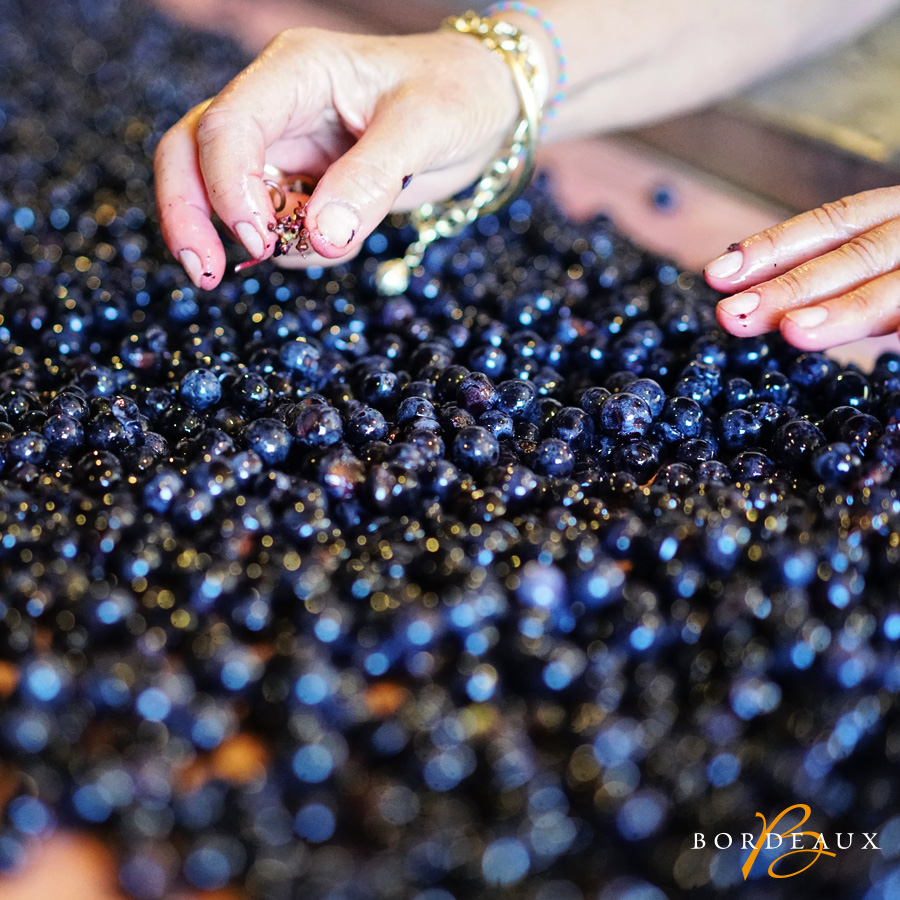
6. And finally – pressing the grapes
Cheerful whistlers stomping barefoot in containers full of grapes… Does it mean anything to you? It involves pressing the grapes and is usually the first thing that comes to mind when talking about the vintage.
Today, bare feet have been replaced by a large pressing machine with two grooved cylinders that press the grapes without crushing the seeds. It is a fundamental step in red wine making: it facilitates the fermentation of the grapes in the vats.
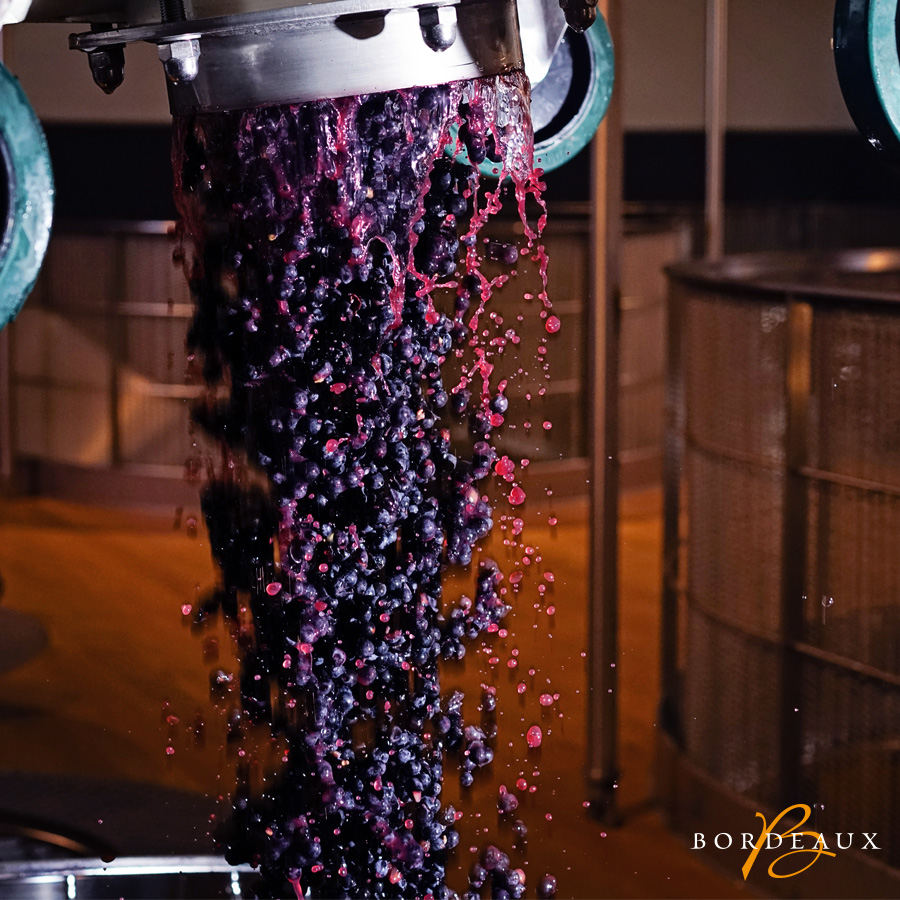
Now it’s time for the soaking and fermentation… But that’s another story!
